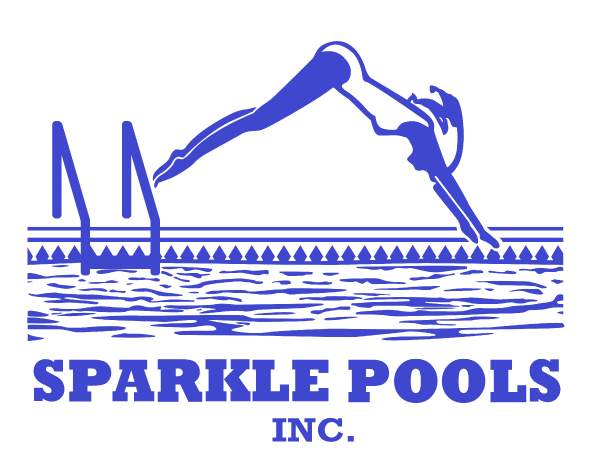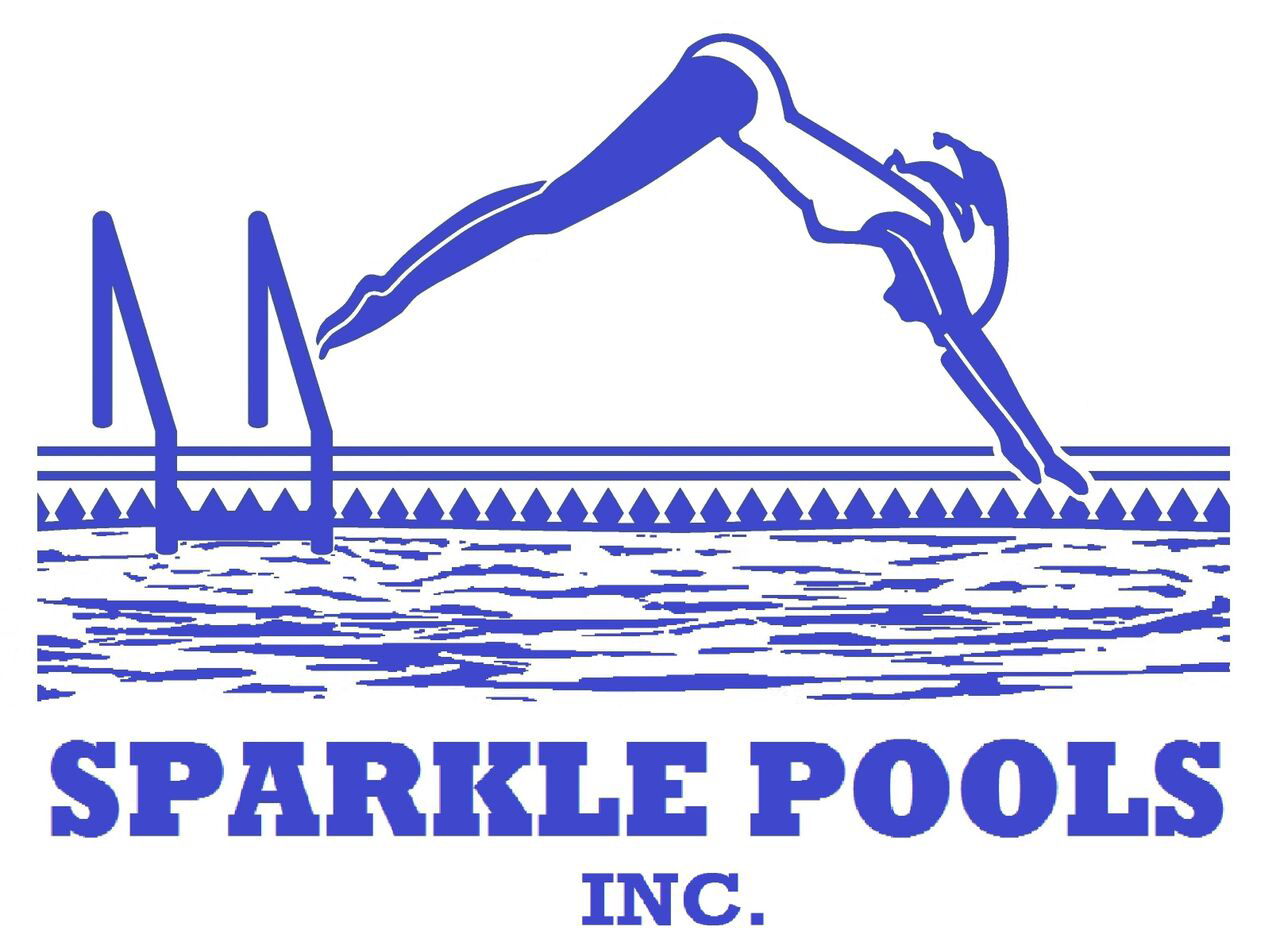TROUBLESHOOTING
TROUBLE SHOOTING
Swimming Pool Problems and Solutions
Problem: Green floating algae begins growing on the walls and floor of the pool, spreads rapidly, especially in the presence of sunlight.”
Solution: Adjust the pH to 7.4. Depending on pool’s surface type, use granular shock. Carefully follow use directions, especially dosage levels. (Check with your pool professional for the recommended algaecide).
Problem: Black or spot algae first appears as small specks on the pool’s surface then rapidly grows to larger areas. Strongly clings to walls and floor. Highly resistant, can pit plaster surface and cause roughness.”
Solution: Adjust pH to 7.4. Depending on pool’s surface, vigorously brush spots with the appropriate brush and treat with granular shock as soon as algae is detected. Re-treatment may be necessary. (Check with your pool professional for the recommended algaecide).
Problem: Mustard algae, named for it’s yellowish-tan color. Easily brushed off surfaces but quickly returns. It prefers shady areas with poor circulation. Resists normal chlorinating treatments.”
Solution: Take water sample to your local dealer. Correction will include brushing and the use of algaecide. Follow dealer and label directions carefully. (Check with your pool professional for the recommended algaecide).
Problem: Unable to see the bottom of the pool. Water lacks sparkle, appears dull and flat.”
Solution: Most cloudy water problems are related to poor filtration. Operate filter at least 8 hours per day continuously until water clears.
Problem: Weak flow from return inlets, poor-to-no surface activity, frequent backwash cycles, inadequate filtration due to dirty filter media.
Solution: Filter should be cleaned twice each season. Dirt and oil buildup can be removed, contact your dealer for product information.
Problem: High pH (over 7.6) and high level of total alkalinity (over 200 ppm).
Solution: Ideally, adjust pH to 7.4 – 7.6 with pH Decreaser. See your local dealer to lower total alkalinity.
Problem: Buildup of organic contamination that causes dull-looking water.
Solution: Oxidize contaminants with granular shock.
Problem: Sanitizer level is below 1.0 ppm.
Solution: Add granular chlorinating sanitizer.
Problem: Difficulty in maintaining 1.0 – 3.0 free-chlorine residual.
Solution: Increase amount of tablets, skimmer sticks, or granular chlorinating products. Increase flow rate through your chlorinator and/or circulation time on pump.
Problem: Early stages of algae infestation, slick or slimy walls, black spots on walls or floor, mustard-colored dust in areas of poor circulation.
Solution: Refer to Algae portion of troubleshooting guide.
Problem: High levels of calcium hardness and total dissolved solids.
Solution: Take a sample of pool water to your local Dealer. Follow recommendations.
Problem: Rough, sandpaper-like deposits on the pool’s surfaces. Scale may also build up inside the circulatory plumbing, especially the heater. This condition leads to reduced circulation, loss of heater efficiency, impaired equipment operation and clogging.
Solution: Adjust and maintain pH to acceptable range of 7.2 – 7.6. Take water sample to your local dealer for possible adjustment of total alkalinity and calcium hardness.
Problem: Sometimes called pink or red algae, this is an unsightly but harmless bacteria which is easily brushed away but tends to return. Pink Slime collects in and around ladders, skimmers, lights, steps, any plastic surfaces and pool walls at the water line.
Solution: Adjust pH to the acceptable range of 7.2 – 7.6 and thoroughly brush affected areas and add granular shock.
Problem: Continuous addition of free chlorine fails to raise sanitizer level in pool water. Test kit reading shows low-to-no sanitizer level.
Solution: Make sure filter runs for a minimum of 8 hours per day, longer in hot weather and heavy bather loads. Make certain test reagents are fresh and unspoiled. Check for inadequate product levels in skimmer, floater or chlorinator. Make sure chlorinator tubing is free for obstructions.
Problem: Algae presence.
Solution: Algae growth will cause a drastic increase in chlorine consumption. If algae is present, add granular shock and algaecide.
Problem: Improper chemical balance.
Solution: Take a sample of your pool water to your local dealer for complete analysis. Follow recommendations.
Problem: Water is clear, but has a greenish, reddish brown or dark brown tint.
Solution: Trace metals are the most likely reason the pool water has discolored. Refer to the Metals and Stains section. Take a water sample to your local dealer for analysis and follow dealer’s instructions.
Problem: Water has greenish tint, but is cloudy.
Solution: This is green floating algae. Refer to the algae portion of the troubleshotting guide.
Problem: Staining appears as discoloration on pool surfaces. These stains may be green, blue, purple, gray, reddish-brown or beige to brown.
Solution: All “permanent” stains (ones not easily brushed off) are the result of some chemical imbalance or metals present in the water.
Problem: Gray, green to bluish purple stains.
Solution: Most likely copper, possibly iron.
Problem: Reddish to yellow-brown stains
Solution: Iron is the most likely cause.
Problem: Medium to dark brown stains.
Solution: Uncommon, but most probably the reason is manganese.
Problem: Beige to tan stains on plastered or marcite finishes.
Solution: This is calcium or silicate scale build-up. Although scale is white, dirt is trapped in the crystals as they form.
Problem: A prolonged foam build-up which accumulates in the corners of the pool or bubbles which remain on the water’s surface for more than a few seconds.
Solution: Apply algaecides according to use directions. Carefully measure and accurately calculate your pool’s volume. Wash and rinse deck areas carefully so cleaning compounds do not get into pool. Use only prescribed surface cleaners on your tiles and pool’s interior. Granular shock will destroy organic contaminants, a possible source of foaming.
Problem: Green floating algae begins growing on the walls and floor of the pool, spreads rapidly, especially in the presence of sunlight.”
Solution: Adjust the pH to 7.4. Depending on pool’s surface type, use granular shock. Carefully follow use directions, especially dosage levels. (Check with your pool professional for the recommended algaecide).
Problem: Black or spot algae first appears as small specks on the pool’s surface then rapidly grows to larger areas. Strongly clings to walls and floor. Highly resistant, can pit plaster surface and cause roughness.”
Solution: Adjust pH to 7.4. Depending on pool’s surface, vigorously brush spots with the appropriate brush and treat with granular shock as soon as algae is detected. Re-treatment may be necessary. (Check with your pool professional for the recommended algaecide).
Problem: Mustard algae, named for it’s yellowish-tan color. Easily brushed off surfaces but quickly returns. It prefers shady areas with poor circulation. Resists normal chlorinating treatments.”
Solution: Take water sample to your local dealer. Correction will include brushing and the use of algaecide. Follow dealer and label directions carefully. (Check with your pool professional for the recommended algaecide).
Problem: Unable to see the bottom of the pool. Water lacks sparkle, appears dull and flat.”
Solution: Most cloudy water problems are related to poor filtration. Operate filter at least 8 hours per day continuously until water clears.
Problem: Weak flow from return inlets, poor-to-no surface activity, frequent backwash cycles, inadequate filtration due to dirty filter media.
Solution: Filter should be cleaned twice each season. Dirt and oil buildup can be removed, contact your dealer for product information.
Problem: High pH (over 7.6) and high level of total alkalinity (over 200 ppm).
Solution: Ideally, adjust pH to 7.4 – 7.6 with pH Decreaser. See your local dealer to lower total alkalinity.
Problem: Buildup of organic contamination that causes dull-looking water.
Solution: Oxidize contaminants with granular shock.
Problem: Sanitizer level is below 1.0 ppm.
Solution: Add granular chlorinating sanitizer.
Problem: Difficulty in maintaining 1.0 – 3.0 free-chlorine residual.
Solution: Increase amount of tablets, skimmer sticks, or granular chlorinating products. Increase flow rate through your chlorinator and/or circulation time on pump.
Problem: Early stages of algae infestation, slick or slimy walls, black spots on walls or floor, mustard-colored dust in areas of poor circulation.
Solution: Refer to Algae portion of troubleshooting guide.
Problem: High levels of calcium hardness and total dissolved solids.
Solution: Take a sample of pool water to your local Dealer. Follow recommendations.
Problem: Rough, sandpaper-like deposits on the pool’s surfaces. Scale may also build up inside the circulatory plumbing, especially the heater. This condition leads to reduced circulation, loss of heater efficiency, impaired equipment operation and clogging.
Solution: Adjust and maintain pH to acceptable range of 7.2 – 7.6. Take water sample to your local dealer for possible adjustment of total alkalinity and calcium hardness.
Problem: Sometimes called pink or red algae, this is an unsightly but harmless bacteria which is easily brushed away but tends to return. Pink Slime collects in and around ladders, skimmers, lights, steps, any plastic surfaces and pool walls at the water line.
Solution: Adjust pH to the acceptable range of 7.2 – 7.6 and thoroughly brush affected areas and add granular shock.
Problem: Continuous addition of free chlorine fails to raise sanitizer level in pool water. Test kit reading shows low-to-no sanitizer level.
Solution: Make sure filter runs for a minimum of 8 hours per day, longer in hot weather and heavy bather loads. Make certain test reagents are fresh and unspoiled. Check for inadequate product levels in skimmer, floater or chlorinator. Make sure chlorinator tubing is free for obstructions.
Problem: Algae presence.
Solution: Algae growth will cause a drastic increase in chlorine consumption. If algae is present, add granular shock and algaecide.
Problem: Improper chemical balance.
Solution: Take a sample of your pool water to your local dealer for complete analysis. Follow recommendations.
Problem: Water is clear, but has a greenish, reddish brown or dark brown tint.
Solution: Trace metals are the most likely reason the pool water has discolored. Refer to the Metals and Stains section. Take a water sample to your local dealer for analysis and follow dealer’s instructions.
Problem: Water has greenish tint, but is cloudy.
Solution: This is green floating algae. Refer to the algae portion of the troubleshotting guide.
Problem: Staining appears as discoloration on pool surfaces. These stains may be green, blue, purple, gray, reddish-brown or beige to brown.
Solution: All “permanent” stains (ones not easily brushed off) are the result of some chemical imbalance or metals present in the water.
Problem: Gray, green to bluish purple stains.
Solution: Most likely copper, possibly iron.
Problem: Reddish to yellow-brown stains
Solution: Iron is the most likely cause.
Problem: Medium to dark brown stains.
Solution: Uncommon, but most probably the reason is manganese.
Problem: Beige to tan stains on plastered or marcite finishes.
Solution: This is calcium or silicate scale build-up. Although scale is white, dirt is trapped in the crystals as they form.
Problem: A prolonged foam build-up which accumulates in the corners of the pool or bubbles which remain on the water’s surface for more than a few seconds.
Solution: Apply algaecides according to use directions. Carefully measure and accurately calculate your pool’s volume. Wash and rinse deck areas carefully so cleaning compounds do not get into pool. Use only prescribed surface cleaners on your tiles and pool’s interior. Granular shock will destroy organic contaminants, a possible source of foaming.

